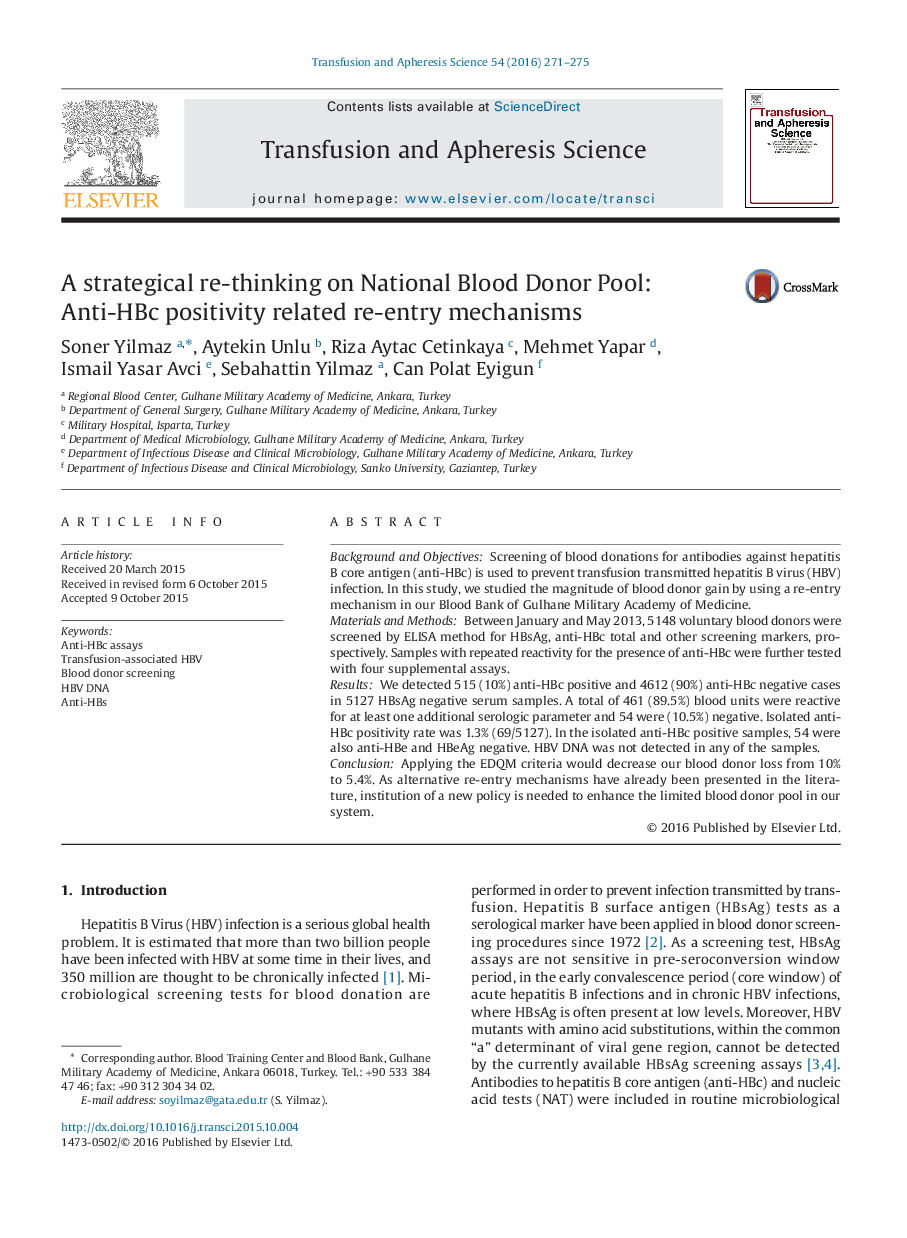| Article ID | Journal | Published Year | Pages | File Type |
|---|---|---|---|---|
| 3334874 | Transfusion and Apheresis Science | 2016 | 5 Pages |
Background and ObjectivesScreening of blood donations for antibodies against hepatitis B core antigen (anti-HBc) is used to prevent transfusion transmitted hepatitis B virus (HBV) infection. In this study, we studied the magnitude of blood donor gain by using a re-entry mechanism in our Blood Bank of Gulhane Military Academy of Medicine.Materials and MethodsBetween January and May 2013, 5148 voluntary blood donors were screened by ELISA method for HBsAg, anti-HBc total and other screening markers, prospectively. Samples with repeated reactivity for the presence of anti-HBc were further tested with four supplemental assays.ResultsWe detected 515 (10%) anti-HBc positive and 4612 (90%) anti-HBc negative cases in 5127 HBsAg negative serum samples. A total of 461 (89.5%) blood units were reactive for at least one additional serologic parameter and 54 were (10.5%) negative. Isolated anti-HBc positivity rate was 1.3% (69/5127). In the isolated anti-HBc positive samples, 54 were also anti-HBe and HBeAg negative. HBV DNA was not detected in any of the samples.ConclusionApplying the EDQM criteria would decrease our blood donor loss from 10% to 5.4%. As alternative re-entry mechanisms have already been presented in the literature, institution of a new policy is needed to enhance the limited blood donor pool in our system.
